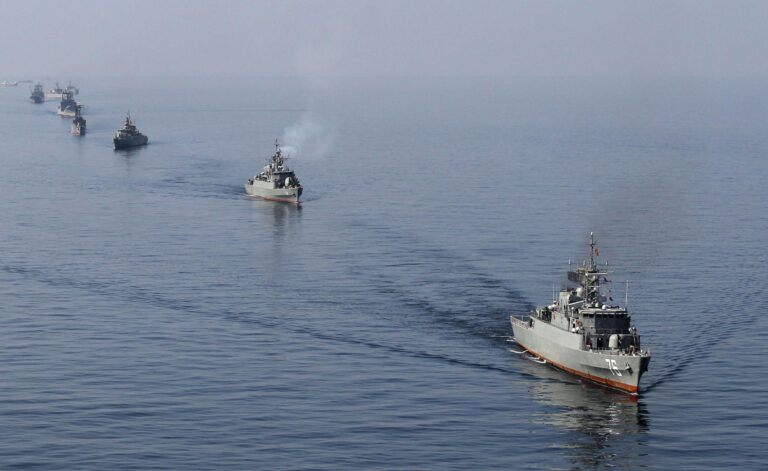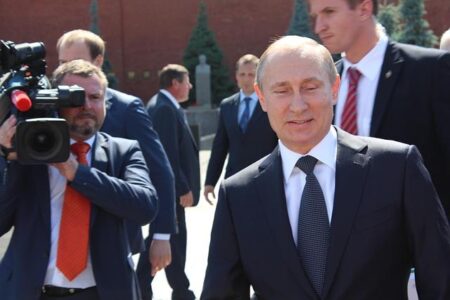Footage has emerged revealing joint naval maneuvers conducted by Russia and China in the Pacific Ocean, signaling a coordinated show of force that challenges U.S. dominance in the region. The exercises, captured on video and reported by Newsweek, underscore growing military cooperation between Moscow and Beijing amid escalating geopolitical tensions. Experts warn that these developments could reshape the strategic balance in the Indo-Pacific, raising concerns about freedom of navigation and regional security.
Russia and China Conduct Coordinated Naval Exercises in the Pacific Escalating Regional Tensions
Recent video footage has captured unprecedented naval maneuvers carried out jointly by Russian and Chinese forces in the Pacific Ocean, signaling a bold assertion of their growing maritime ambitions. These exercises, observed off the coasts near contested waters, involved a diverse fleet including guided-missile destroyers, submarines, and support vessels, showcasing sophisticated interoperability between the two powers. Analysts point out that the scale and precision of these drills represent not only a strategic challenge to U.S. naval dominance but also a clear message regarding control over vital sea lanes and regional influence.
The coordinated drills emphasized several key operational capabilities, including:
- Anti-Submarine Warfare (ASW) tactics enhancing threat detection and neutralization;
- Electronic Warfare (EW) aimed at disrupting communication and radar systems;
- Maritime Patrol and Surveillance to monitor strategic chokepoints.
Below is a summary table outlining the main assets deployed during the exercises:
| Type of Vessel | Quantity | Mission Focus |
|---|---|---|
| Guided-Missile Destroyers | 6 | Surface Warfare & Air Defense |
| Attack Submarines | 3 | Stealth & Surprise Attacks |
| Supply & Support Ships | 4 | Logistics & Refueling |
Analysis of Strategic Implications for US Maritime Dominance and Indo-Pacific Security
Amid recent naval exercises broadcasted from the Pacific, the United States faces a pronounced strategic challenge as Russia and China execute coordinated maneuvers aimed at undermining US maritime superiority. These operations signal a shifting balance of power, where joint warship deployments and simulated combat drills showcase Moscow and Beijing’s intent to assert influence over critical sea lanes. The implications extend beyond mere displays of force; they disrupt established security frameworks that have long underpinned US dominance in the region. Washington’s response must evolve to address multifaceted threats, encompassing not only military preparedness but also enhanced diplomatic engagement with regional allies.
Key factors influencing the security dynamic include:
- Enhanced Anti-Access/Area Denial (A2/AD) Capabilities: Both Russia and China are deploying advanced missile systems and submarine assets, designed to restrict freedom of navigation.
- Integrated Multinational Training: The unprecedented scale of Sino-Russian naval cooperation signals a new era of alliance-building aimed at contesting US influence.
- Strategic Focus on the Indo-Pacific: Control over vital chokepoints such as the South China Sea and the Malacca Strait remains central to contesting economic and military mobility.
| Capability | Russia | China | US Response |
|---|---|---|---|
| Submarine Fleet | Advanced Borei-class | Growing Yuan-class | Upgrading Virginia-class |
| Ballistic Missiles | Kalibr Cruise Missiles | DF-21D “Carrier Killer” | Standard Missile-6 & Hypersonic R&D |
| Joint Exercises | Regular Pacific Drills | Expanding Blue-Water Capabilities | Frequent Freedom of Navigation Operations |
Recommended US Naval Response and Strengthening Alliances to Counter Emerging Maritime Threats
To effectively counter the escalating presence of Russian and Chinese naval forces in the Pacific, the United States must prioritize a multifaceted strategy that emphasizes rapid adaptability and strategic presence. This includes enhancing the operational readiness of the carrier strike groups, expanding the deployment of unmanned maritime systems for intelligence, surveillance, and reconnaissance (ISR), and increasing investments in anti-submarine warfare capabilities. Bolstering forward-deployed forces with advanced missile defense and electronic warfare technologies will also be crucial to maintaining a credible deterrent against these emerging threats.
Strengthening alliances remains a cornerstone of regional security architecture. Renewed commitments to joint maritime exercises with Pacific partners such as Japan, Australia, and South Korea will foster interoperability and strategic cohesion. Furthermore, expanding partnerships with ASEAN nations through intelligence sharing and capacity-building initiatives will create a united front. The table below outlines key recommendations and corresponding alliance actions designed to sustain US naval dominance:
| Key Focus | Recommended Action | Allied Contribution |
|---|---|---|
| Maritime ISR Enhancement | Deploy UAV fleets in contested zones | Joint training in UAV operations |
| Anti-Submarine Warfare | Increase patrols with updated sonar tech | Shared submarine tracking data |
| Electronic Warfare | Invest in next-gen jamming systems | Joint research & development efforts |
| Forward-Deployments | Expand missile defense installations in key bases | Host US forces, provide logistics support |
| Alliance Exercises | Conduct large-scale, multi-national drills | Participate actively, share best practices |
Future Outlook
As tensions continue to simmer in the Pacific, the recent naval maneuvers by Russia and China underscore a growing challenge to U.S. influence in the region. With strategic interests and security dynamics increasingly at stake, all eyes remain on how Washington will respond to this assertive display of military coordination. The evolving situation demands close monitoring as the balance of power in the Indo-Pacific faces potential realignment.




